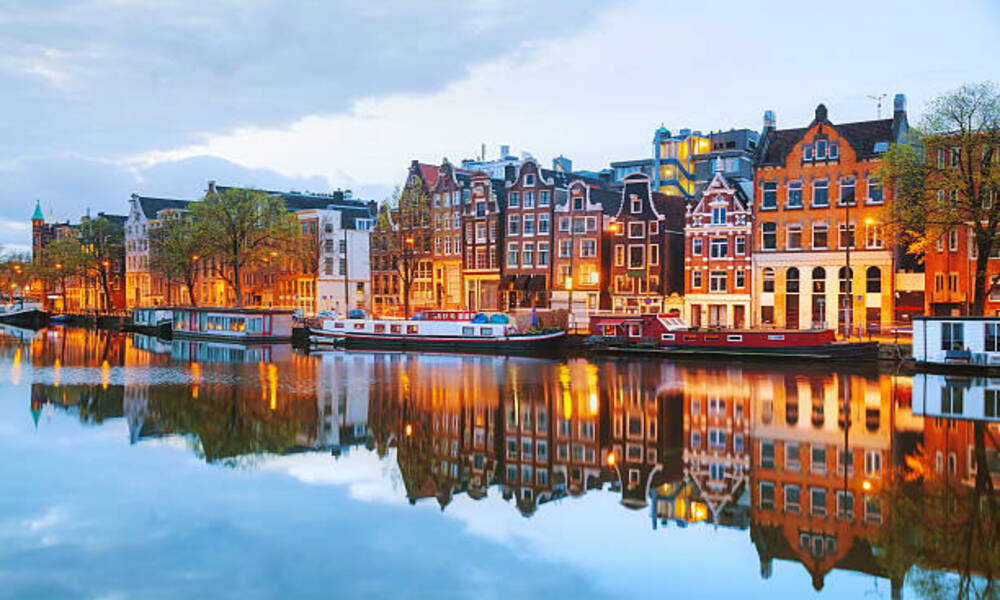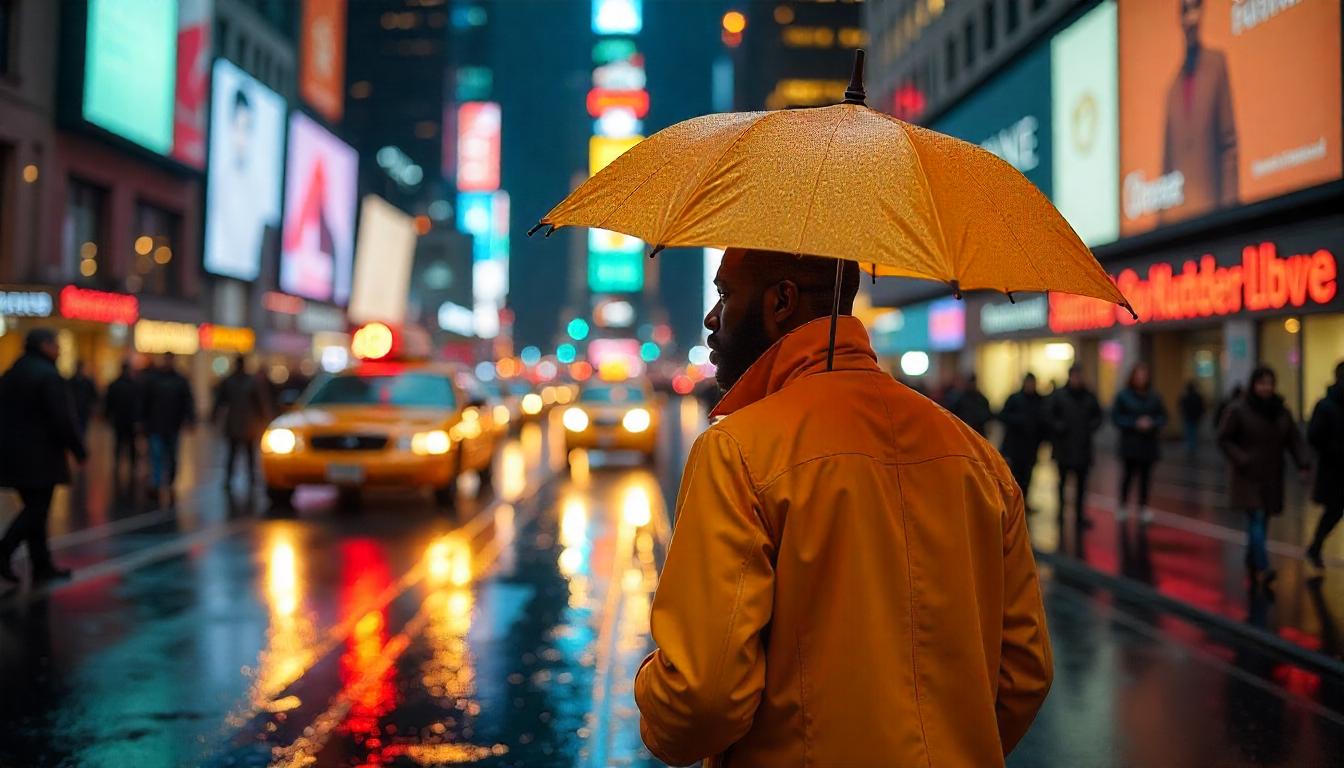≡-Europe Sounding The Alarm As Unstoppable Tourism Surge Pushes Beloved Cities To The Edge Of Collapse – Viral of Today
<> Viral of Today <>
Home
»
EUROPE
»
Europe Sounding The Alarm As Unstoppable Tourism Surge Pushes Beloved Cities To The Edge Of Collapse
Monday, June 23, 2025
Europe, often celebrated as a cultural treasure trove, is now facing mounting pressure from an unprecedented surge in international tourism. Once tranquil cobblestone streets and charming plazas have turned into congested walkways packed with travelers, leading to growing concern over the phenomenon widely referred to as “overtourism.” With visitor numbers reaching record-breaking levels, the strain on local communities and resources has sparked a continental reckoning.
According to data from the United Nations World Tourism Barometer, Europe welcomed an astonishing 747 million international tourists in the previous year alone—more than any other region in the world. Southern and Western Europe absorbed the majority of this influx, accounting for over 70 percent of all arrivals. These regions have become epicenters of overcrowding, where the delicate balance between local life and tourism is increasingly difficult to maintain.
The flood of visitors has begun to overwhelm critical infrastructure, from public housing to essential services like water supply. In cities across the continent, tourists flood public squares, landmark sites, and scenic viewpoints, driven in part by the pursuit of the perfect social media snapshot. The clamor of rolling suitcases and the shuffle of crowds elbowing for space at famous monuments have become everyday occurrences, disrupting the rhythms of daily life for locals.
This relentless surge has triggered a wave of frustration across many communities. Protests against excessive tourism are becoming more frequent, with residents voicing their dissatisfaction over rising rents, environmental degradation, and the erosion of local culture. In response, governments and city authorities have started implementing a series of control measures in hopes of restoring equilibrium.
In popular destinations such as Venice, Amsterdam, Barcelona, and Dubrovnik, authorities are exploring or already enforcing strategies such as tourist taxes, cruise ship limitations, daily visitor caps, and restrictions on short-term rentals. These policies are designed not only to protect heritage sites and public spaces but also to prioritize the well-being of residents who often find themselves displaced or inconvenienced by the relentless flow of sightseers.
A variety of factors are contributing to this explosive growth in tourist numbers. The affordability of air travel, especially budget flights, has made international trips more accessible than ever. Meanwhile, digital tools powered by artificial intelligence now simplify travel planning, making spontaneous getaways effortless. Social media further accelerates this trend by spotlighting popular landmarks and creating viral travel trends, often encouraging massive waves of visitors to descend on the same locations.
Furthermore, despite ongoing global conflicts and economic uncertainties, many of the world’s wealthiest nations continue to experience relatively strong economic performance. This prosperity translates into increased outbound tourism, especially from countries like the United States, United Kingdom, Japan, and China. Travelers from these regions dominate international bookings and often concentrate their visits in well-known European cities, contributing to intense seasonal demand for accommodations, water, and public services.
In cities like Barcelona, locals have long contended with the impacts of mass tourism, including inflated housing prices and excessive noise. Similar stories are unfolding in Venice, where rising tides are now matched by a rising tide of tourists. In Amsterdam, frustrations over rowdy visitor behavior and strain on municipal services have led to aggressive public awareness campaigns and stricter tourism rules.
The problem isn’t just about numbers—it’s also about timing and concentration. Tourist visits tend to peak in the summer months, overwhelming destinations that are unprepared for such density. Resources that serve locals year-round are stretched thin during these seasonal booms, leading to reduced quality of life for residents and diminished experiences for visitors alike.
While the tourism industry remains a vital economic driver for many European economies, the current trend raises questions about sustainability and long-term planning. Balancing the benefits of tourism with its costs has become a pressing priority. Without intervention, the unchecked growth risks damaging the very destinations that attract travelers in the first place.
To address this, experts are urging a shift toward responsible tourism. This includes promoting lesser-known destinations, encouraging off-season travel, regulating tourism-related businesses, and incorporating community input into planning decisions. Education campaigns targeting tourists are also being introduced, aimed at fostering respectful and conscious travel behaviors.
As Europe grapples with the consequences of its own popularity, the region is entering a new phase—one that demands careful stewardship, innovation, and a collective commitment to preserving both its cultural heritage and the quality of life of its citizens. The continent’s future as a global tourism powerhouse will depend not just on welcoming visitors, but on doing so in ways that are thoughtful, equitable, and sustainable.
Despite growing frustration over excessive crowds, some tourism authorities remain optimistic that strategic infrastructure and technology can effectively manage visitor volumes.
In Italy, officials believe that implementing smarter systems can help alleviate the pressure on popular destinations such as Florence’s iconic Uffizi Galleries, home to globally renowned masterpieces. By integrating tools like artificial intelligence into the tourism framework, visitors could be encouraged to book attraction tickets at the same time as their travel plans—months in advance—helping to smooth out peak demand and reduce congestion at these cultural hotspots.
Instead of labeling the influx as a crisis, some officials argue that the solution lies in better distribution and planning. While Southern Europe, including Italy, experienced international arrivals surpassing its national population in 2024, experts point out that most tourist activity remains concentrated in just a small fraction of the country—around 4% of the territory. This uneven distribution, they suggest, presents an opportunity to promote lesser-known regions and redirect foot traffic away from saturated landmarks.
This vision emphasizes that with the right tools, policies, and foresight, even the most visited destinations can strike a sustainable balance between welcoming tourists and protecting local life.
Regions Hit Hardest by Overtourism
Mediterranean nations are experiencing the most intense effects of overtourism, with countries like France and Spain at the epicenter of the crisis. France, which will soon host the Olympic Games, topped global charts in international arrivals last year, welcoming around 100 million tourists. Spain followed closely, attracting nearly 94 million visitors—an astonishing figure that’s almost double its own population.
This overwhelming influx has triggered widespread unrest, especially in Spain, where tensions between residents and tourists have boiled over into public demonstrations. In Barcelona, frustration has reached symbolic levels. Protesters have adopted the water gun as an emblem of resistance, using it in street marches to lightly spray unsuspecting tourists while holding signs that read: “One more tourist, one less resident!” These actions underscore growing resentment among locals who feel displaced and overwhelmed by the constant presence of visitors.
The surge in tourism is placing mounting pressure on city services, infrastructure, and housing, sparking a movement that calls for more regulation and a reimagining of how destinations manage their popularity.
Spain’s Canary and Balearic Islands are bearing some of the heaviest burdens of overtourism in Europe. With a combined population of under 5 million residents, these island destinations welcomed more than 15 million visitors each last year, putting extraordinary pressure on local infrastructure, resources, and services.
Across the continent, similar strains are visible in Italy, where iconic tourist magnets like Venice, Rome, Capri, and Verona struggle to accommodate ever-growing crowds. In Verona, famously linked to the romantic tale of “Romeo and Juliet,” historical sites face daily congestion. Meanwhile, the picturesque Amalfi Coast has seen such intense demand during summer months that luxury services have stepped in—ride-hailing platforms now offer private helicopter transfers and boat rides to help travelers bypass traffic-clogged roads and crowded transit hubs.
The intensity of tourist flows in these destinations highlights the urgent need for more balanced visitor management strategies to protect both cultural heritage and community well-being.
Last year, Greece saw an overwhelming wave of tourism, drawing in a number of international visitors that was nearly quadruple the country’s total population. This overwhelming demand has placed severe stress on vital resources during the peak summer season, particularly on high-profile islands like Santorini, Mykonos, and others. Water shortages, energy demands, and housing constraints have become recurring issues, raising concerns over sustainability and quality of life for residents.
The Ripple Effects of Overtourism
In Spain, the surge in tourism has sparked growing backlash from citizens, scholars, and public officials alike. One of the most pressing concerns is the skyrocketing cost of housing in major cities and popular destinations, driven in large part by the rapid expansion of short-term vacation rentals. These properties often cater exclusively to tourists, displacing long-term residents and shrinking the supply of affordable housing.
Beyond economic pressures, critics point to deeper cultural consequences. The influx of mass tourism is altering the very identity of historic neighborhoods that once made these cities so attractive. In places like Barcelona, once-vibrant local communities are seeing traditional shops and family-run businesses replaced by souvenir stands, global retail chains, and Instagram-friendly cafés. What were once hubs of authentic urban life are increasingly transforming into tourist-centric zones, eroding the unique character that originally drew visitors.
This ongoing transformation underscores a growing need for cities to find a balance—welcoming visitors while preserving the integrity of their communities and the well-being of residents.
Several of Greece’s most frequented islands are now facing a dual crisis as soaring tourist numbers collide with severe water shortages. With drought conditions tightening their grip across the Mediterranean, the country—home to 10.4 million residents—is struggling to maintain essential resources in destinations that attract millions of visitors each year.
Elsewhere in Europe, overtourism is also straining iconic cultural institutions. In France, the Louvre Museum—renowned as the most visited in the world—was forced to temporarily close its doors this week. The shutdown came after staff launched a strike, citing deteriorating conditions caused by overwhelming visitor volumes. The closure left thousands of ticket-holding tourists stranded outside, exposed to sweltering summer heat.
Experts warn that the rising tide of mass tourism is transforming once-diverse cities and cultural hubs into homogenous environments. In popular destinations across Europe, local character and variety risk being replaced by a singular focus on serving tourist needs. This shift threatens to create a kind of cultural “monoculture,” where the uniqueness of each place is diluted by uniformity catering to global tourism demands.
How Authorities Are Responding to the Overtourism Crisis
Spain is taking decisive steps to confront what many officials describe as one of the country’s most pressing issues—its housing shortage, exacerbated by the rapid growth of tourism. In a bold move last month, the government directed Airbnb to delist nearly 66,000 properties that were found to be in violation of local housing regulations.
In a separate but related effort, the city of Barcelona has announced plans to eliminate all 10,000 licensed short-term rental apartments by 2028. This phased strategy aims to reclaim housing stock for long-term residents and curb the escalating cost of living in the city center, which has been heavily influenced by tourist demand.
Beyond housing, governments across Europe are also implementing broader measures to manage the volume of visitors. Some destinations are limiting overnight accommodations, particularly in overcrowded areas, while others are introducing tourist entry fees—especially for those arriving on cruise ships—to reduce day-trip congestion and generate revenue for infrastructure maintenance.
These policies reflect a growing recognition that sustainable tourism requires proactive governance, not just promotion. As cities and countries across Europe adapt, the focus is shifting toward preserving livability for locals while ensuring visitors have a meaningful, responsible travel experience.
In a bid to better manage overtourism and its growing impact on resources, Greece will introduce a new cruise visitor tax starting July 1. Travelers disembarking on popular islands such as Mykonos will be charged €20 (approximately $23), while those visiting lesser-known destinations like Samos will pay €5 (around $5.70). This policy aims to offset the costs of maintaining infrastructure and resources strained by the influx of cruise passengers.
Greek authorities are also encouraging travelers to explore less-frequented destinations as part of a broader effort to distribute tourism more evenly across the country. At the same time, to combat severe water shortages exacerbated by peak-season demand, the government has deployed water tankers from the mainland to support the driest islands. In addition, several islands have expanded their use of desalination systems to convert seawater into potable water, helping to maintain supply during periods of intense tourism activity.
Other crowd control efforts include introducing staggered entry times at popular landmarks such as the Acropolis in Athens, reducing peak congestion while preserving the visitor experience.
Italy’s Venice has reintroduced its widely debated access fee for day visitors, aiming to control the overwhelming flow of tourists entering the city. Following a trial period last year, the city now charges visitors between €5 and €10 (roughly $6 to $12) during high season. The fee targets non-overnight guests and is part of a wider initiative to protect the city’s delicate infrastructure and reduce overcrowding, particularly in its historic center.
These actions represent a growing shift among European destinations toward sustainable tourism management—balancing economic benefits with environmental protection and community welfare.
This information will surprise you!
See also
- Read until the end to discover everything.
- Important information you need to know.
- Interesting facts and helpful tips.
Conclusion
Did you enjoy the news? Keep following us daily!













